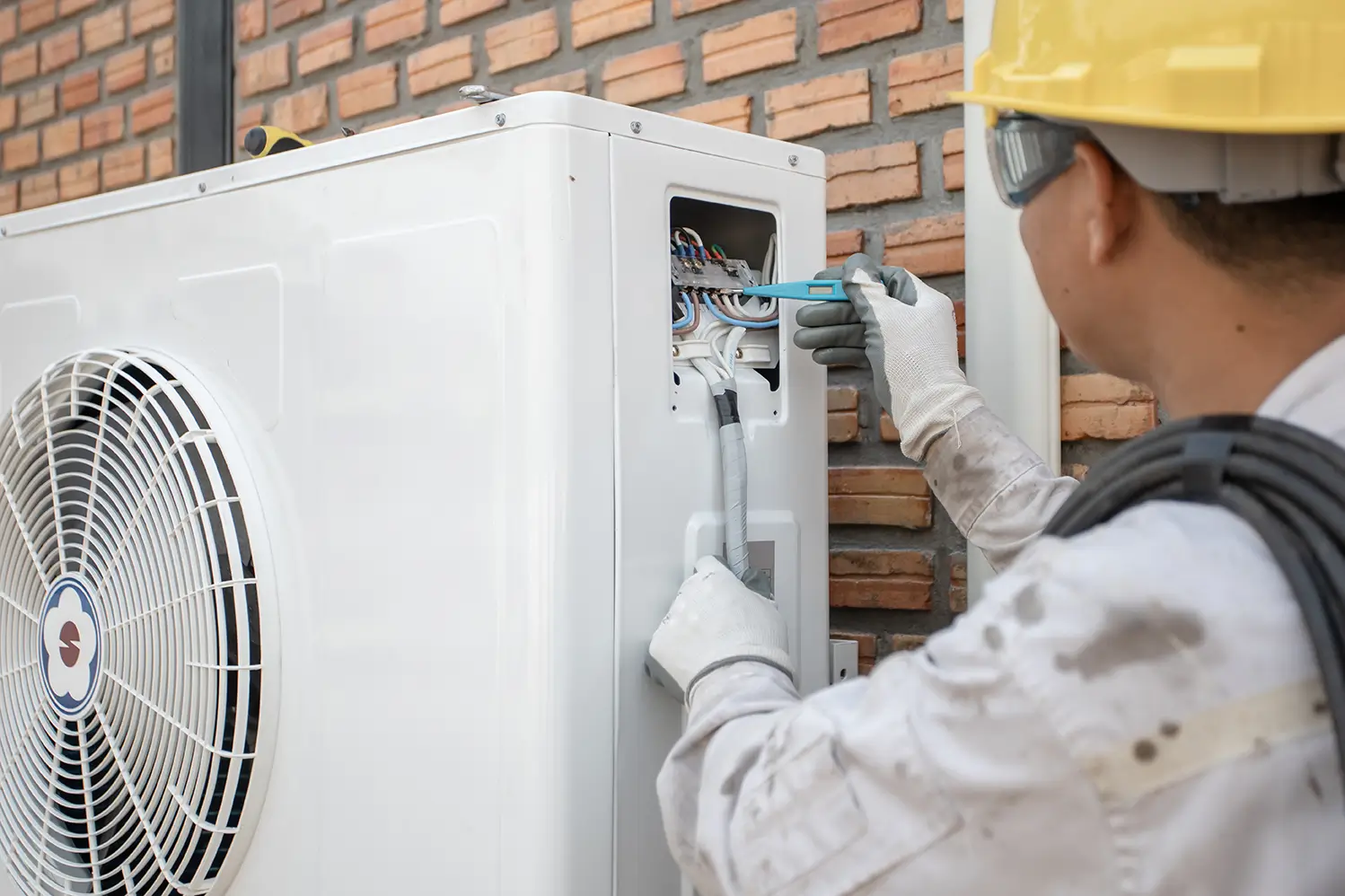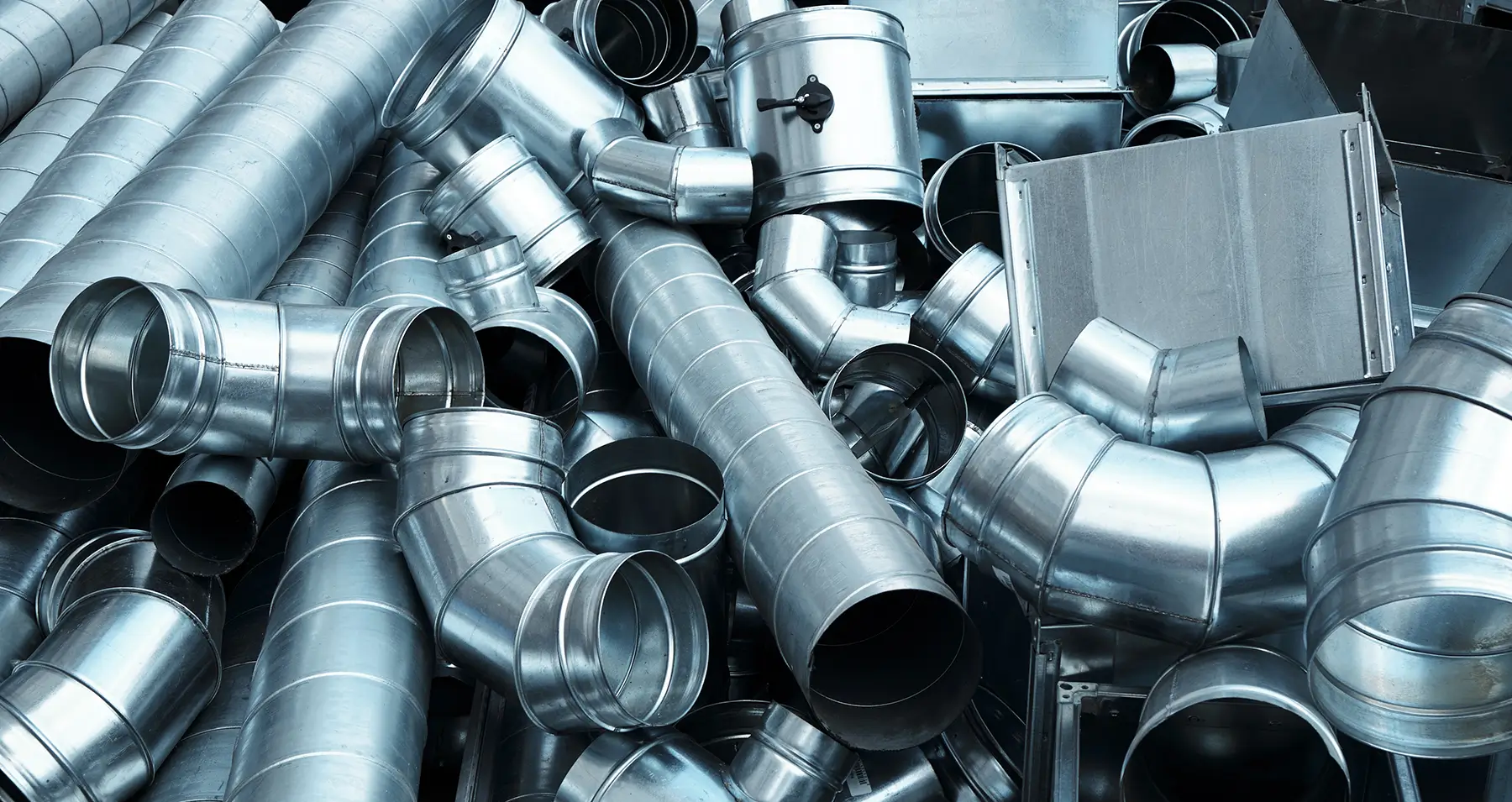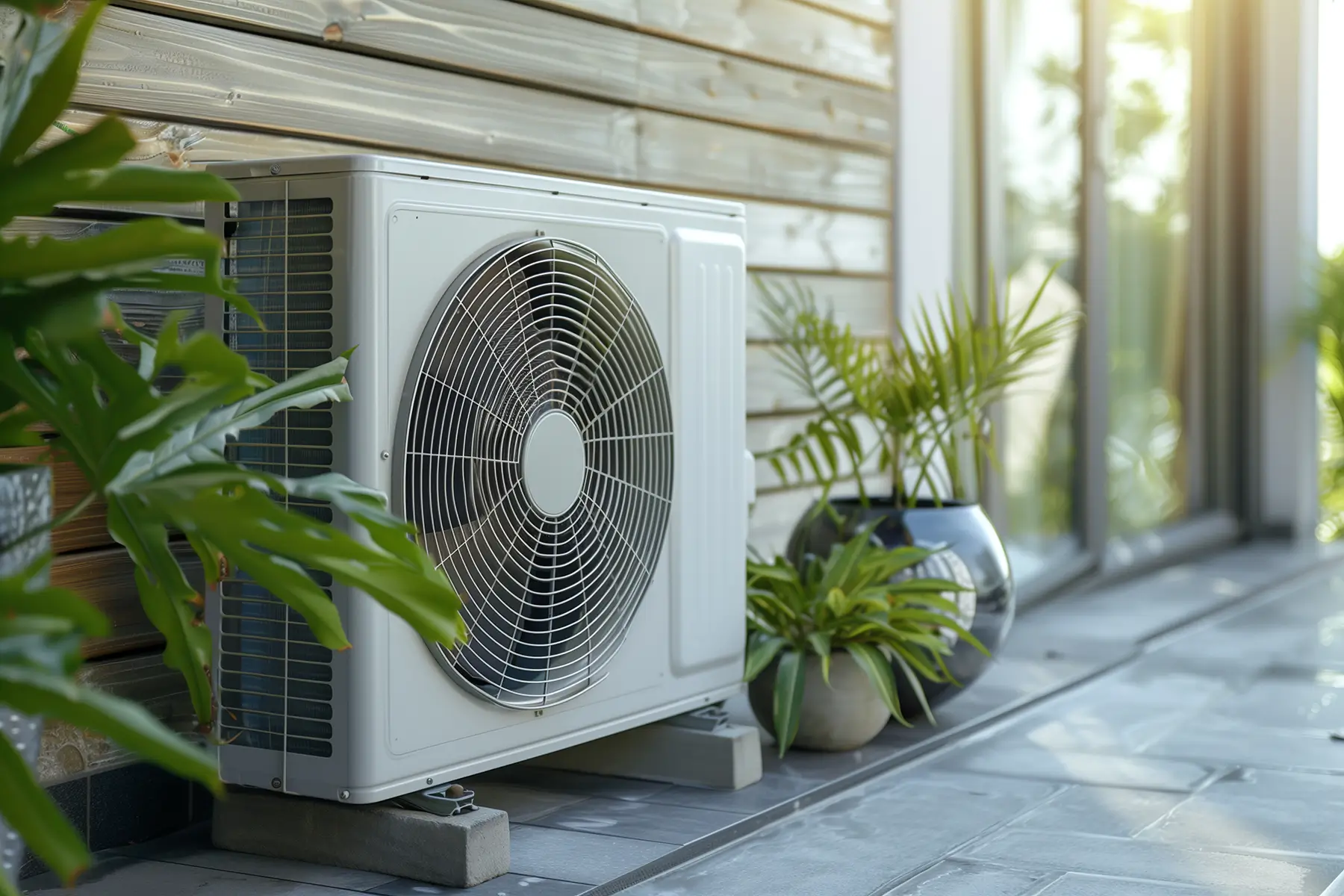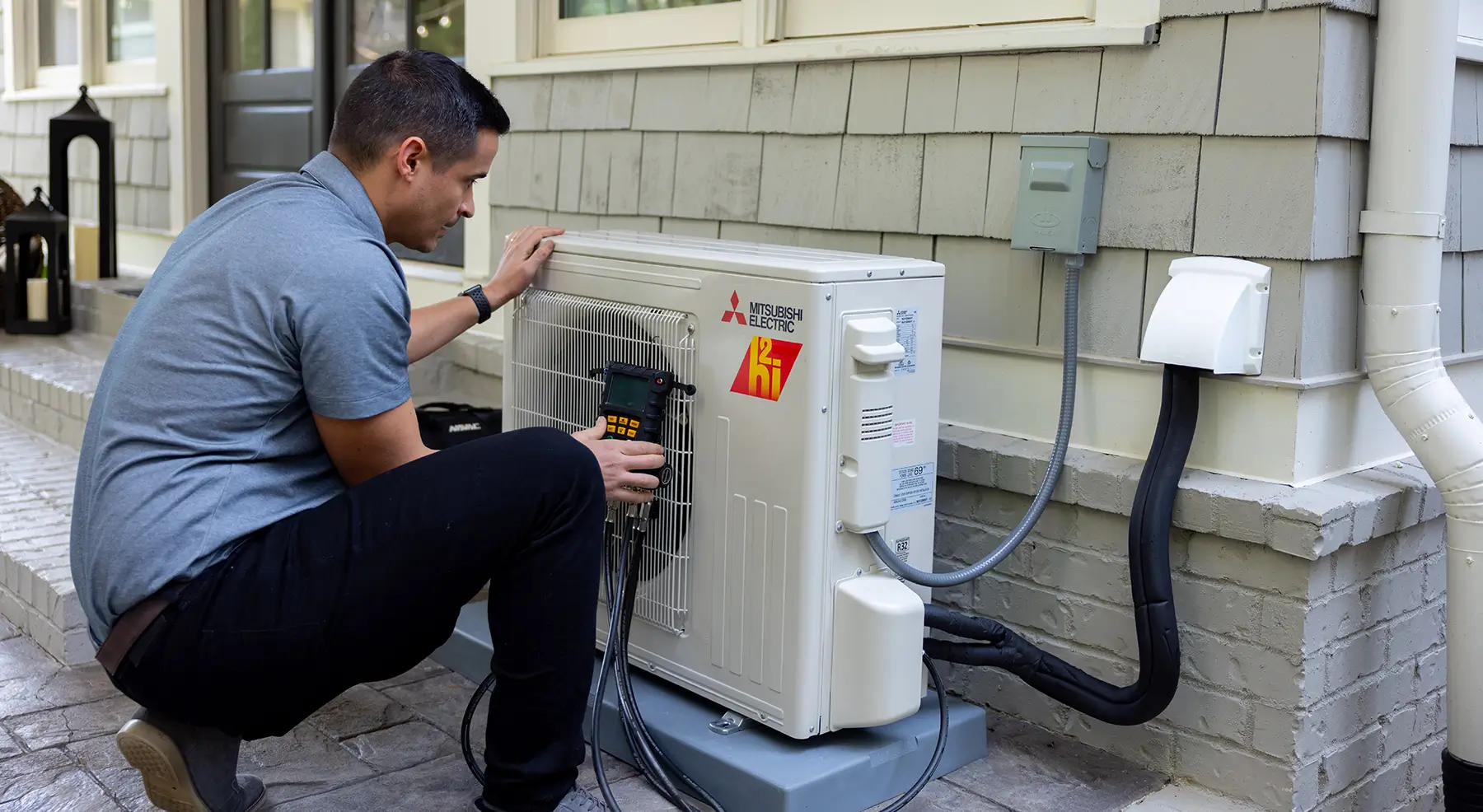A ductless heat pump, a mini-split system, is a highly efficient heating and cooling solution that operates without requiring ductwork. This system consists of two main components: an outdoor compressor/condenser and one or more indoor air-handling units. These units are connected by a conduit, which houses the power cable, refrigerant tubing, suction tubing, and a condensate drain.
Table of Contents
What is a Ductless Heat Pump?
What is a Traditional HVAC System?
What is a Traditional HVAC System?

Efficiency and Energy Savings
On the other hand, traditional HVAC systems can be less efficient due to the following reasons:
Installation Process
Ductless Heat Pump Installation:
Traditional HVAC System Installation:
Higher Installation Costs: The complexity and labor-intensive nature of installing a traditional HVAC system generally lead to higher installation costs. These costs include materials, labor, and potential home structure modifications.
Space and Aesthetics
Ductless Heat Pumps:
Traditional HVAC Systems:
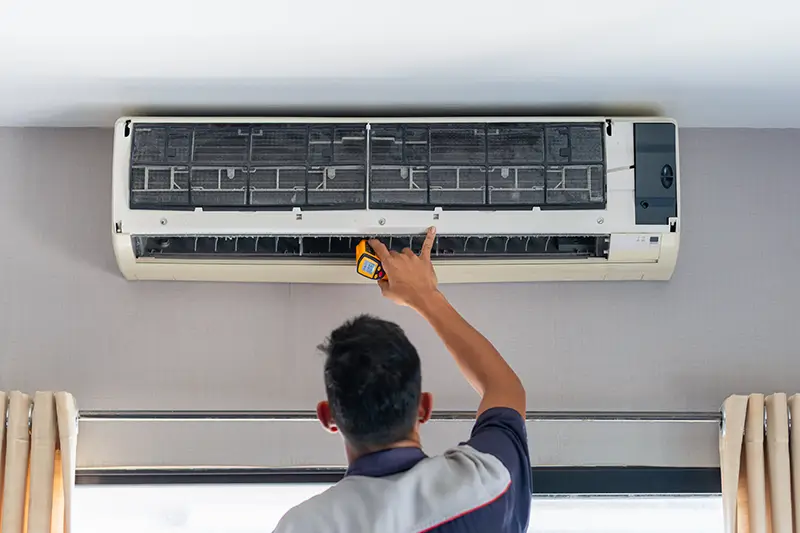
Maintenance and Longevity
Ductless Heat Pumps:
Traditional HVAC Systems:
Zoning and Temperature Control
Ductless Heat Pumps:
Traditional HVAC Systems:
Cost Considerations
Ductless Heat Pumps:
Traditional HVAC Systems:
Summary of Cost Considerations:
Ductless Heat Pumps:
- Higher initial cost
- Lower operating and maintenance costs
- Potential for rebates and incentives
- Long-term savings through energy efficiency
Traditional HVAC Systems:
- Lower initial cost, especially with existing ductwork
- Higher operating and maintenance costs
- Higher long-term costs due to energy inefficiency and duct maintenance
Noise Levels
Ductless Heat Pumps:
Traditional HVAC Systems:
Summary of Noise Levels:
Ductless Heat Pumps:
- Indoor units operate very quietly, often below 26 dB
- Outdoor units are quieter, typically between 40-50 dB
- There is no noise from ductwork, as there are no ducts
Traditional HVAC Systems:
- Indoor units can produce noticeable noise, around 40-60 dB
- Outdoor units can be loud, often 70 dB or more
- Noise from air moving through ducts, including whistling and popping sounds
Flexibility and Adaptability
Ductless Heat Pumps:
Traditional HVAC Systems:
Summary of Flexibility and Adaptability:
Ductless Heat Pumps:
- Highly versatile a
- and adaptable installation
- Ideal for retrofitting older homes without ductwork
- Easily expanded or modified for home additions and remodels
- Suitable for a wide range of spaces
Traditional HVAC Systems:
- Standard installation best suited for homes with existing ductwork
- It is challenging and costly to retrofit into older homes
- Complex and expensive to expand for home modifications
- Less flexible for unique or small spaces
Final Comparison
Ductless Heat Pumps:
Traditional HVAC Systems:
Our Recommendation:
Contact RYCOR HVAC
Why Contact RYCOR HVAC?
Get Started Today
Don’t leave your home’s comfort and efficiency to chance. Contact RYCOR HVAC today to explore your HVAC options and find the best solution for your home. Our team of professionals is ready to assist you with every step of the process, from consultation and installation to ongoing maintenance and support.

